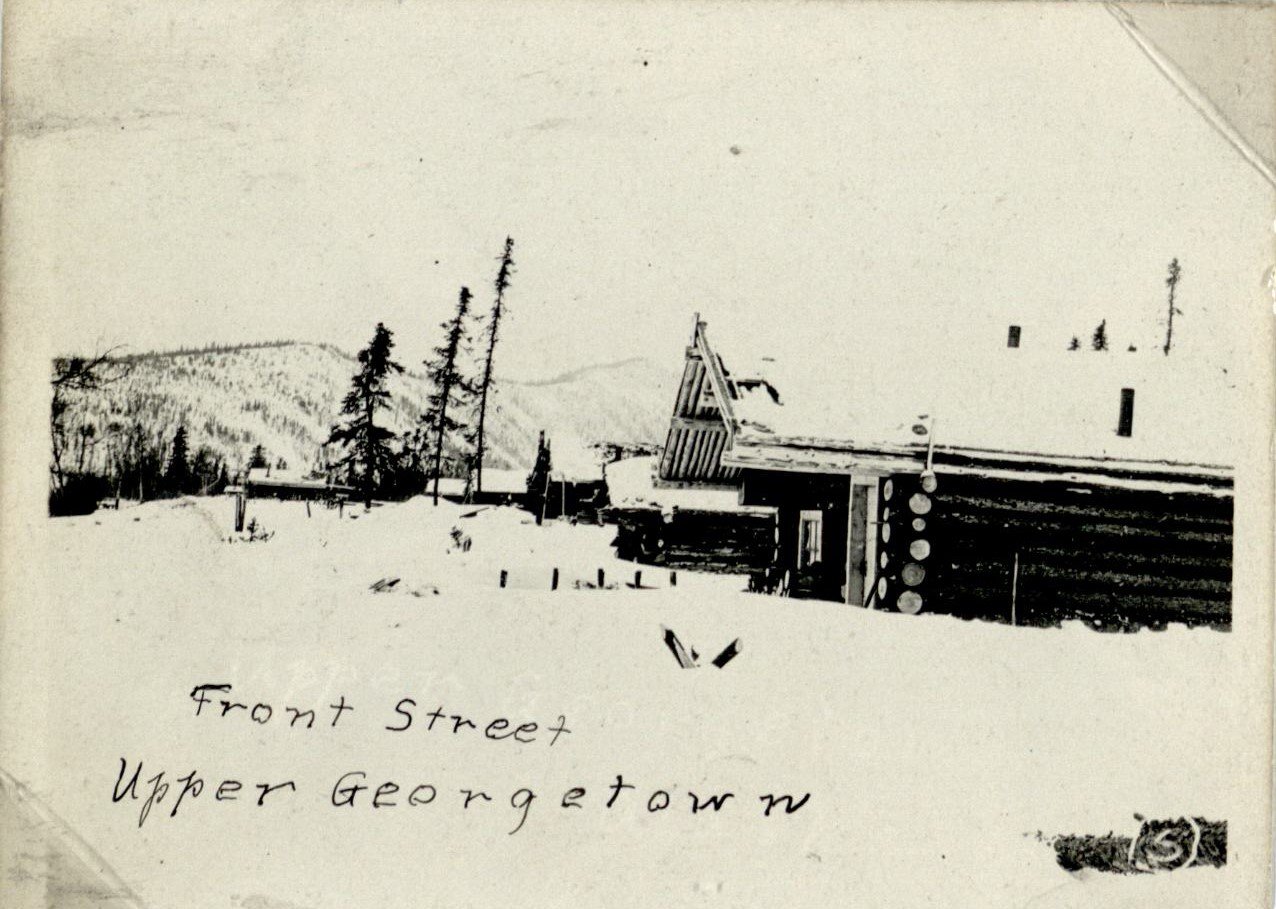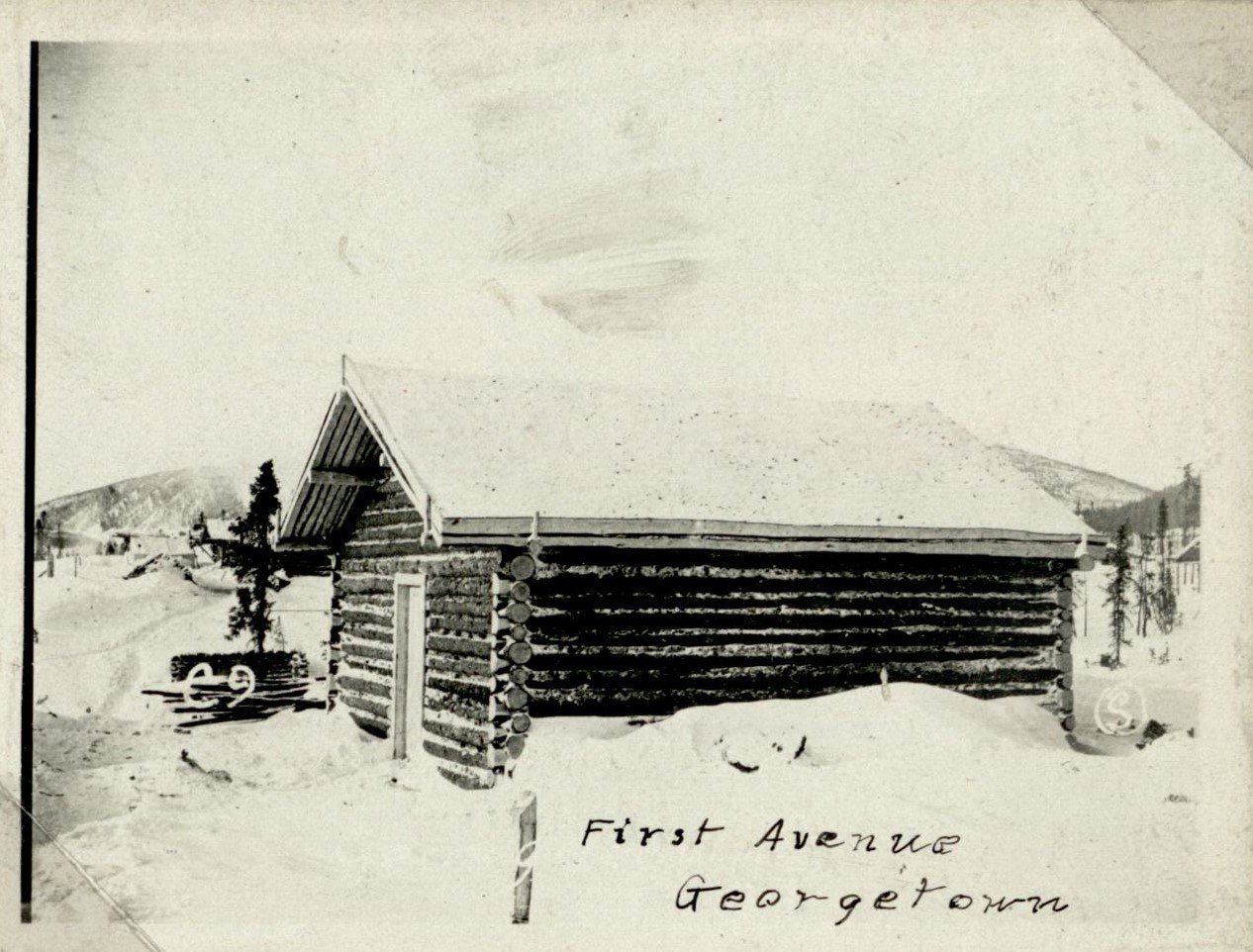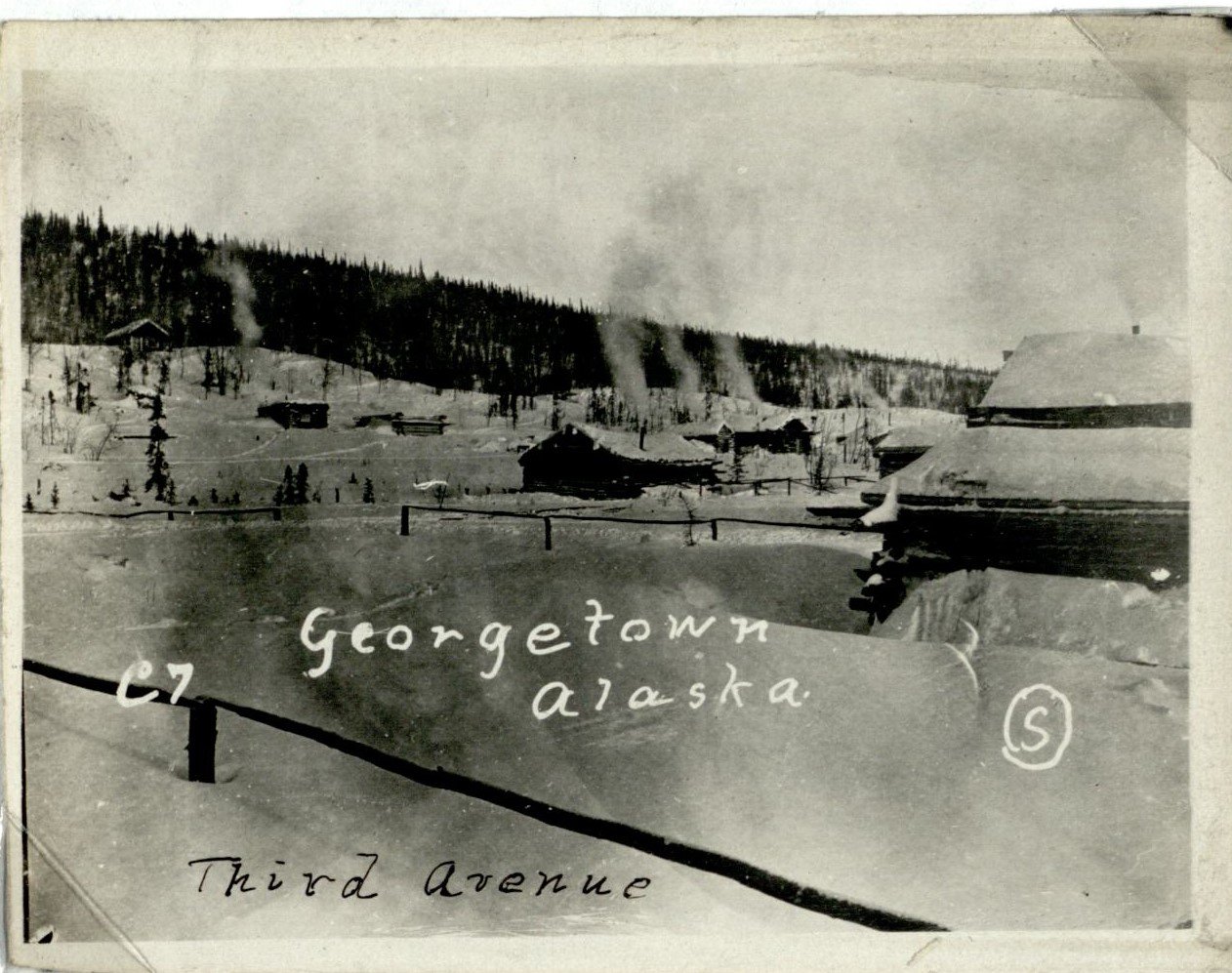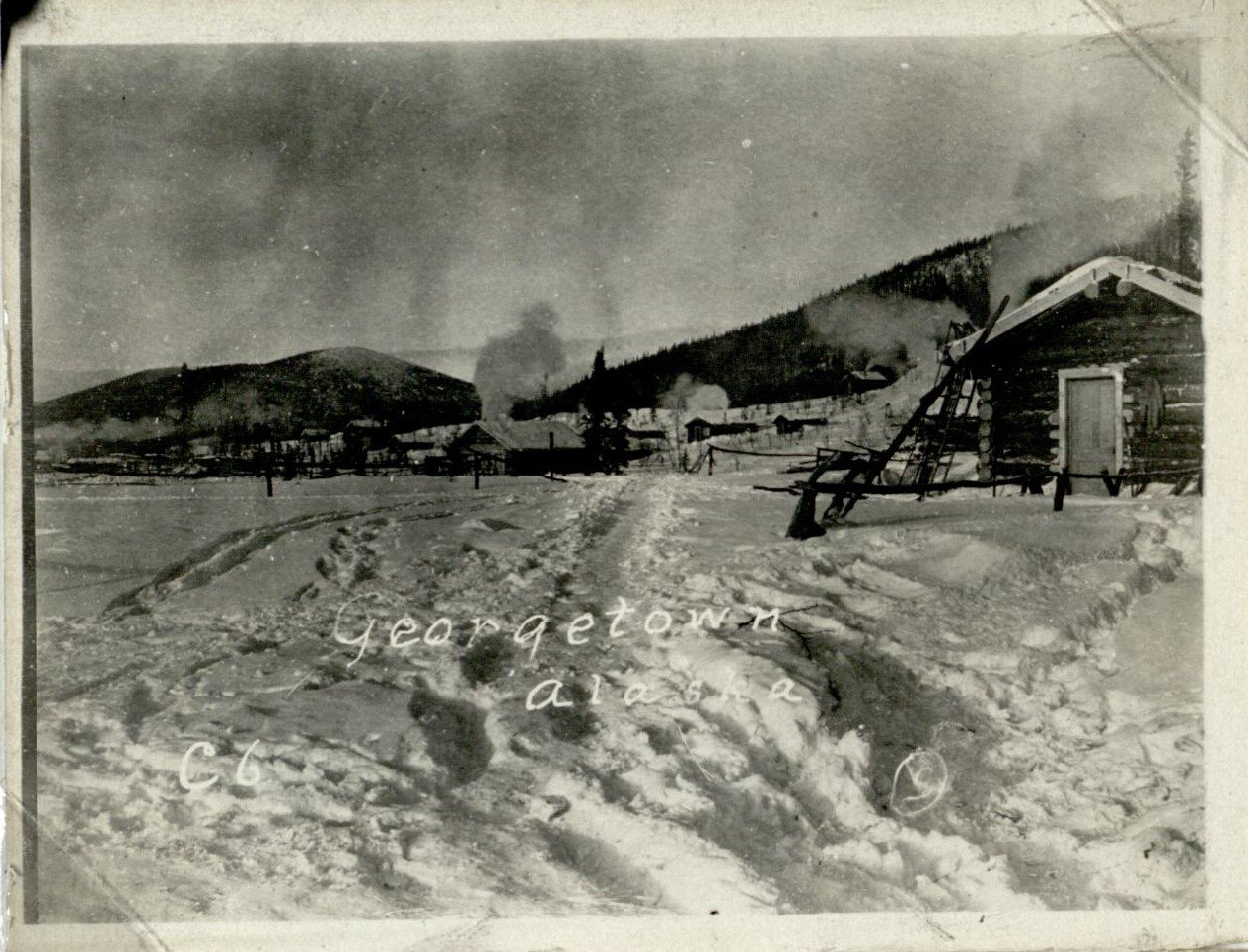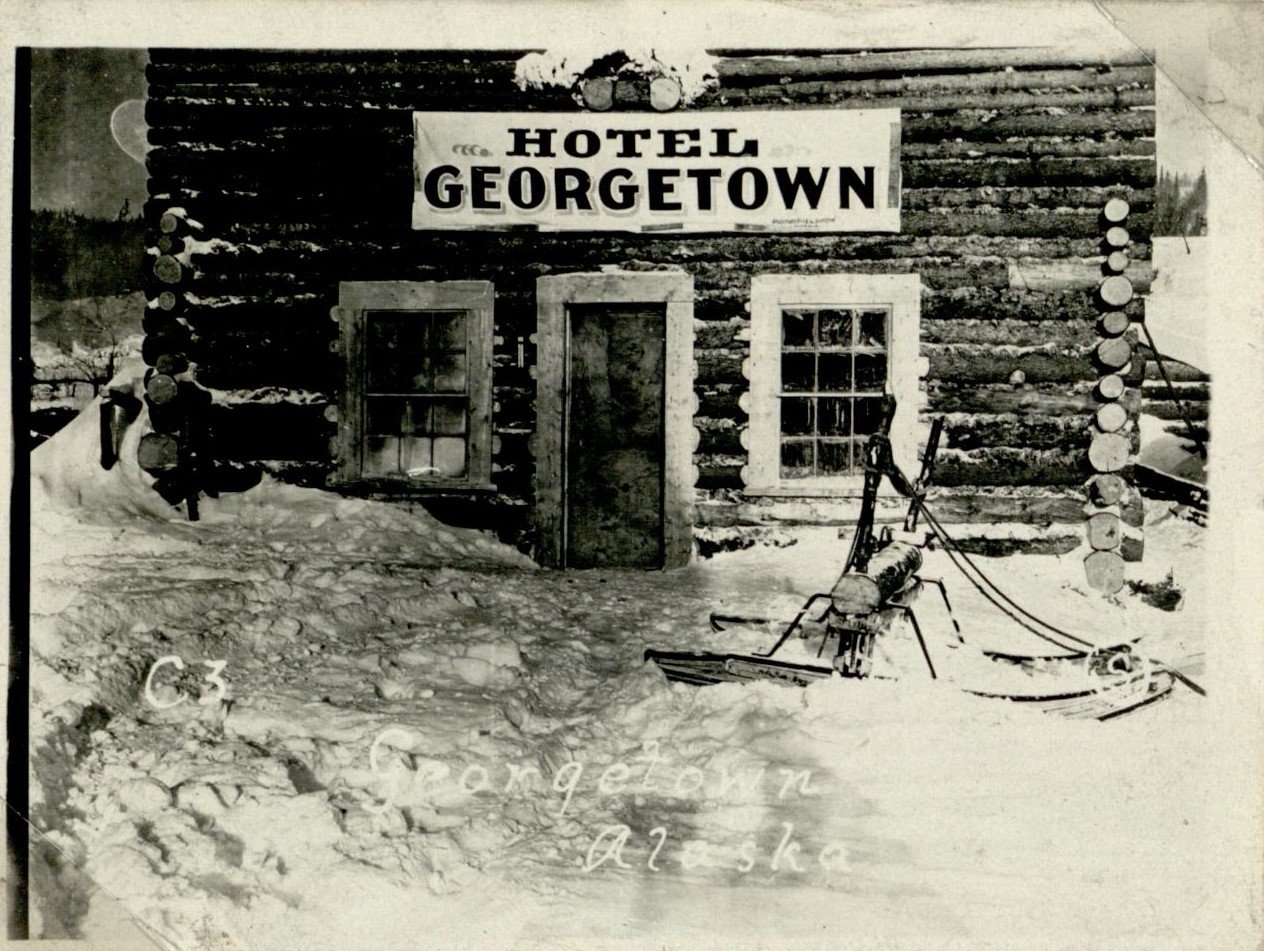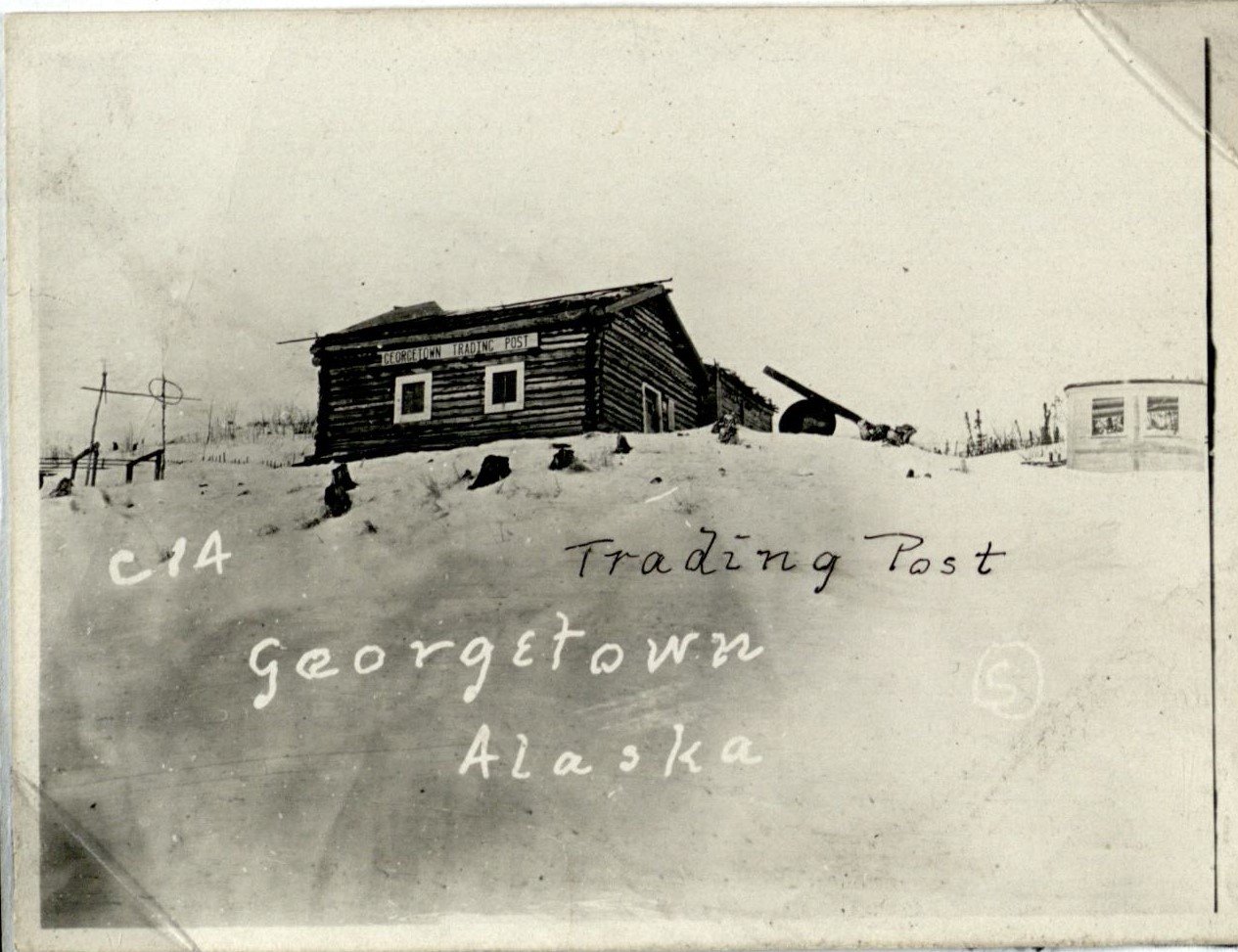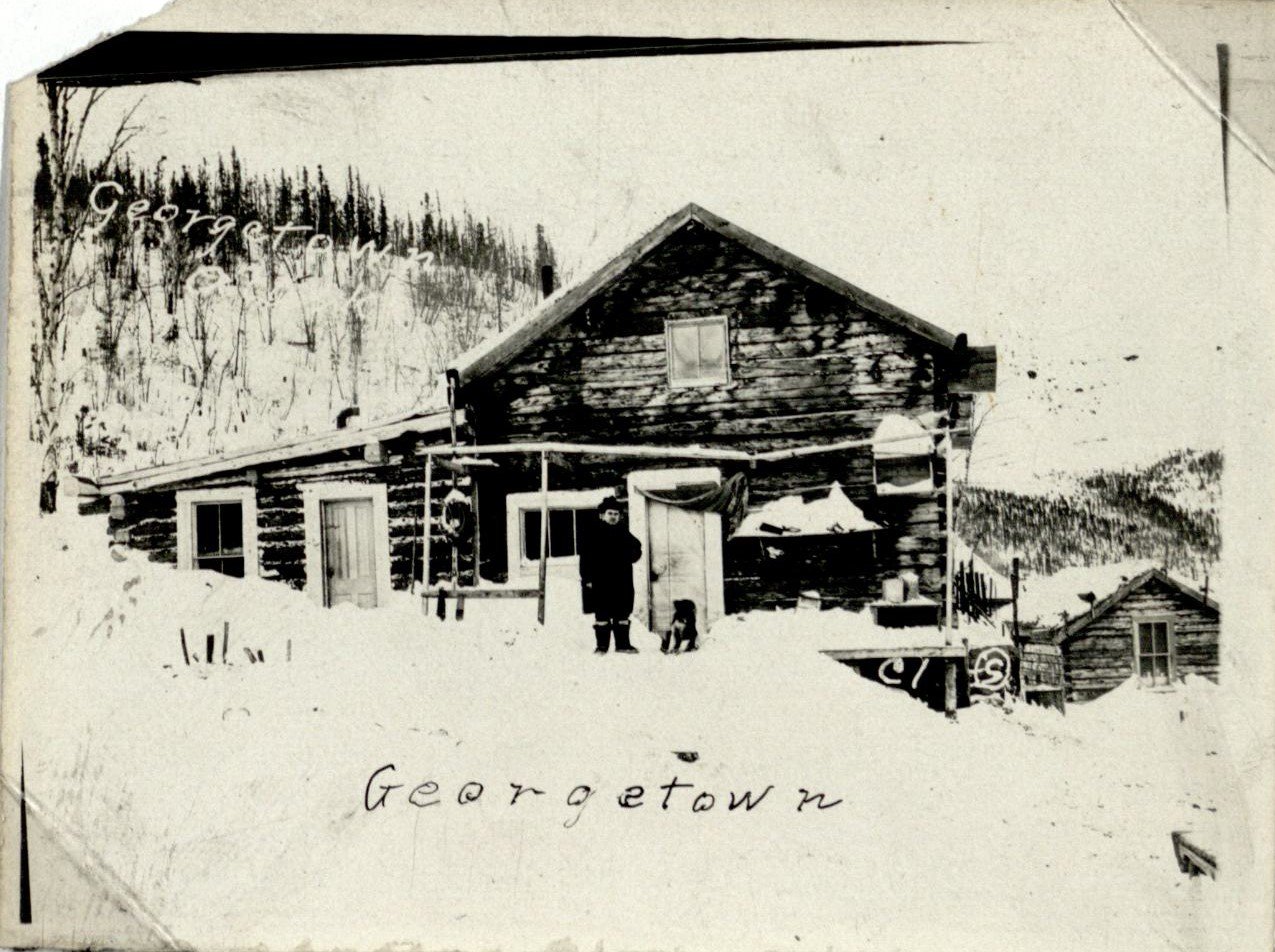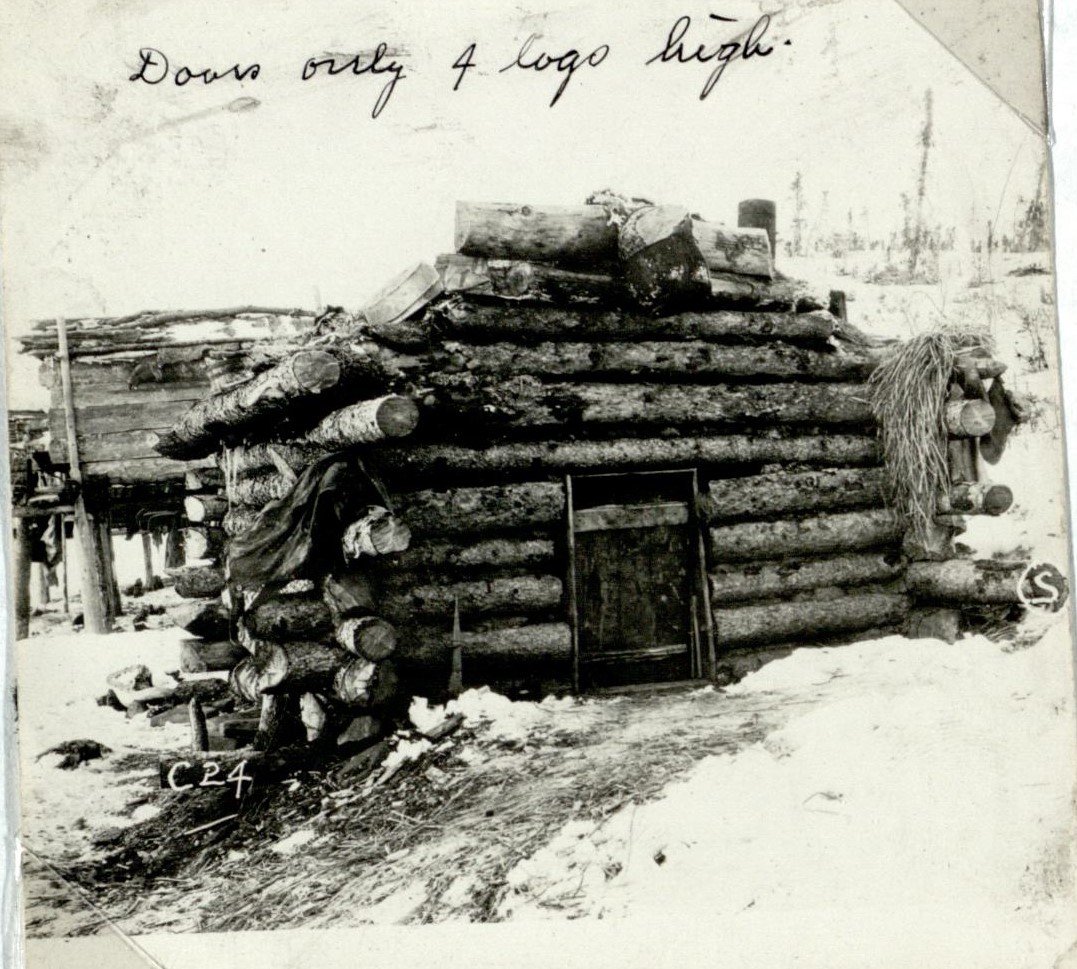Life during the Mining Days in Georgetown
By Eric Dietrich
Winter 2019
There is not a lot of recorded history about the middle Kuskokwim Region. The Russian explorers did leave journals of their travels but information after the purchase of Alaska from Russia in 1867 is scarce. In my search for information on the Library of Congress’s website I stumbled across a digital copy of the Iditarod Pioneer, a newspaper from the town of Iditarod which ran from 1910 to 1919. Most of the information in this article is from that newspaper which relied on information from miners and other travelers. This article captures most of the key information found.
The Georgetown gold rush made the front page of the August 28th 1910 edition of the Iditarod Pioneer.
Finding Gold
It all began with the discovery of gold on Julian Creek in 1909-1910. Julian Creek is about 25 miles from the mouth of the George River and is one of the many connecting tributary streams. Before the discovery of gold the Georgetown River was known as the Yuniluk or Yukwonilnuk and later the George River. The miners were looking for new deposits of gold and followed the network of streams south of the mining town of Iditarod.
As news of the discovery spread, it started the short-lived gold rush on the Kuskokwim with a couple of thousand hopeful miners arriving from Iditarod, Fairbanks, and beyond. By the summer of 1910, there were about 150 miners working Julian Creek, Spruce Creek, Keland Creek, and Jenny Creek. A town began to develop around the mouth of the George River as supplies for the miners could be brought up the Kuskokwim River by the steamboats, The Lavelle Young and The Quickstep, on their way to the town of Takotna. Supplies were then transported by pack or pole boat up the George River to the mining sites. George Fredericks had been running a trading post at that location since 1907 supplying and trading with fur trappers.
A picture of the US Marshal’s Office in Georgetown in 1910 from the Alaska State Library “Trip to Alaska ca. 1910-1920 Photo Collection”
The Boom
As the town began to develop US Marshal H.K. Love and US Commissioner Doc Green, were sent from Fairbanks to their new post at Georgetown. Two towns, both named Georgetown, began to develop creating an upper and lower Georgetown. It was said that the former police chief of Fairbanks was helping lay out the streets for upper Georgetown. In the fall of 1910, the Territorial Governor created the Kuskokwim Mining District and placed its office at Georgetown for the recording of mining claims. As the population increased, the availability of supplies did not keep up as reports of shortages of food, clothing, and equipment forced many to live off the land. By November 1910, Georgetown had a population of about 200 and 100 cabins, two hotels, a roadhouse, and the Kuskokwim Commercial Company store in addition to the trading post owned by George Fredericks.
The Kuskokwim Commercial Company Post pictured in the Alaska State Library “Trip to Alaska ca. 1910-1920 Photo Collection”
With the recording office located in Georgetown, there was talk that the Iditarod Telephone Company was considering running a wire to Georgetown and a wireless telegraph station in 1911.
In 1911 Georgetown got its first Mayor, Duke E. Stubbs, as well as a new Commissioner, Judge Heavey, and a new Marshel, Harry Siebe. That summer the Northern Commercial Company bought one of the hotels in Georgetown, the Northern Hotel, and converted it into a store to compete with the rival Kuskokwim Commercial Company. The one thing that was lacking was a big gold strike.
Hard Times
While some miners working along Donlin Creek were having success with their operations, many did not find the quantity of gold to make their operations worthwhile and returned to Iditarod and Flat. By December 1910 it was reported that there were 75 people in Georgetown. July 21st, 1911 tragedy struck as a wildfire burned down over half of the cabins, but residents were able to save a small amount of them and the two stores and the Pioneer Hotel. Most of the cabins lost to the fire were not occupied and were being used as supply caches. By late fall 1911, the population had dropped to less than a dozen people. Many of the people who lost property to the wildfire did not return and rebuild. Additionally, with the reports of little gold to be found on the tributaries, many chased rumors of the next find on the Aniak River. The town was not completely abandoned and was still used as a stopover on the overland route from the Kuskokwim to Flat and Iditarod. This soon changed as a new and more direct trail was created in fall 1912 that bypassed Georgetown. By 1914 there were only occasional reports of mining in the area around Georgetown. The hotel had closed, and both stores soon followed and sent their inventories to Takotna. The office for the mining district, and the Commissioner, had moved from Georgetown to its new location at the mouth of the Aniak River leaving only six residents in Georgetown. The paper’s last mention of Georgetown was as a reference point for the Park’s cinnabar mine in 1916.

